So, what is the future of content marketing now that ChatGPT and generative AI have hit the scene?
For many content marketers and marketing creatives, GenAI looks like it might turn the entire world upside down:
- ChatGPT can write in any language, including programming languages
- Midjourney can create stunning images of any subject in any style
- Runway ML and Pika can turn images or text prompts into video clips
- Google and Meta are using AI to create and optimize ads
These are a few of the many examples of how AI is invading the workplace.
And while some may say we can never know what the future holds, I completely disagree.
I think the writing’s on the wall.
In this article:
- I’m going to walk through four trends that content marketers can expect in the coming months and years, some of which are well underway
- I’ll show what a weird world we’re moving into
- And I’ll explain what content marketers, content creators, and marketing creatives need to do in order to stay relevant and competitive
To start, let’s look at the first trend:
Trend 1: Content Will Become a Cheap Commodity
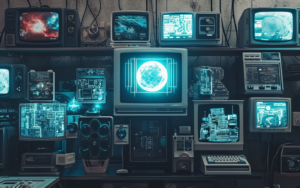 Less than a year since ChatGPT hit the big leagues, it was already able to generate top-quality writing in seconds.
Less than a year since ChatGPT hit the big leagues, it was already able to generate top-quality writing in seconds.
Anyone can sit down with ChatGPT+, feed in a few keywords, and churn out mass content that is better than 80% of human SEO content writers (my ballpark estimate).
Some SEO professionals suggest that, to combat this trend, Google is already giving more weight to backlinks.
Unfortunately, this means that search results are going to be skewed more in favor of “authoritative” websites instead of relevant content.
And, like any newspaper or advertising-driven publisher, this means that Google will favor bigger companies with bigger ad accounts.
Solopreneurs, bloggers, and small businesses with smaller SEO budgets will have a harder time ranking because they need to purchase backlinks, guest posts, articles, and advertising.
But SEO content is only one of many types of writing ChatGPT excels at.
I’ve used it to write:
- Short stories
- Novel outlines
- Poetry
- Songs
- Curriculums and lesson plans
- Metaphors, parables, and analogies
In short, anything you can think of, it can write…and since text is also the language used to feed image, video, and code generation, we’re looking at a very daunting pile of job tasks that stand to be hit by the GenAI automation wave.
Trend 2: Web Content Such as Blog Articles Will Disappear
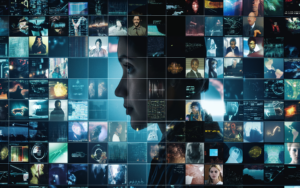 On top of the challenges of SEO, attention spans have been shrinking for a while now.
On top of the challenges of SEO, attention spans have been shrinking for a while now.
“No one reads anymore,” complain many readers and writers.
And it’s true.
With the rise of video, social media, Kindle, podcasts, and other new media formats:
- Attention spans have withered
- People read less
- They spend more time in digital worlds than the real world
- We are leading busier lives
- There’s more and more noise competing for our attention
It should be no surprise, therefore, that text is being competed away by newer, more stimulating forms of content.
And when people do read, they don’t have the patience or the time for fluff, creative wordplay, or writing that taxes the brain: both people and Google want well-organized content that is clear, skimmable, scannable, and easily summarizable.
With the rise of video and the Metaverse, I fully expect “boring old text” to get drowned out by the noise of the AI-generated hyperreal.
Content marketers and agencies should take notice here, because this will have a significant impact on business, revenue, and marketing models.
Trend 3: AI Controls Your Content
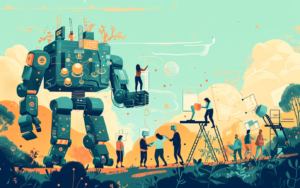 The third trend that interests me is the fact that AI has become the new gatekeeper of all content.
The third trend that interests me is the fact that AI has become the new gatekeeper of all content.
Now, Google is using AI to generate answers to search queries underneath the Google search box on the search results page.
Known as the Search Generative Experience (SGE), Google’s new AI search feature summarizes web content into answers that appear above search results.
Useful for informational queries, SGE may provide a better user experience in some cases, but it also has a few unfortunate side effects for marketers, businesses, and anyone looking to get noticed through Google:
- SGE pushes search results further down the page and, as a result, content becomes further obscured
- Google now has even more control over what information is presented to users and the way it is presented
- Rather than becoming a “search engine,” Google’s function has now changed to that of an “answer engine”
For marketers, one key takeaway is that SGE, virtual assistants, and other AI-powered search engines will be the new filters for marketing content.
And since AI firmly remains under the thumb of its creators, whether that is Google, OpenAI, Amazon, or Apple, these companies will determine whether or what content reaches the global audience.
Marketers should therefore treat these new AI-driven search engines as a platform, like Facebook, which has a particular audience, internal biases, and rules.
So if you want to reach your audience, you’ll need to understand and abide by these rules.
Trend 4: Say Goodbye to Generic Broadcasts, Say Hello to Auto-Personalization
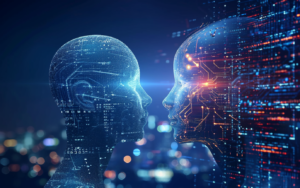 There is another side effect of GenAI that many have yet to grasp: the ability to use GenAI to programmatically generate more GenAI.
There is another side effect of GenAI that many have yet to grasp: the ability to use GenAI to programmatically generate more GenAI.
For instance, with the right data, you can automatically generate text, which can be used for image generation, video generation, and 3D environment generation across virtually any channel, including:
- Advertising
- Websites
- Social media
- Apps
- The metaverse
Imagine a world where:
- Emails are 100% uniquely written for you and no one else
- Website design, imagery, copy, and even the UI is tailored to you
- Video ads are crafted specifically to convert you
- Ads that are dynamically generated based on your recent purchase history
- ChatGPT and other virtual assistants automatically adjust their words, tone, and approach based on your mood
Yes, it all sounds futuristic, yet the technology for this level of automated hyper-personalization already exists.
Google and Meta are already auto-generating and auto-optimizing ads with AI and, thanks to new efficiencies from their AI ads, Google has actually decided to restructure its 30,000 person ad sales unit, a move that could affect around 13,000 people, per Ars Technica.
But this is just the beginning.
When you look at all of the trends covered so far, we seem to be witnessing a convergence of disruptive trends that could cause some serious upheaval in the next few years.
When GenAI comes into full force, what will the world of content marketing look like?
Content Will Be Dynamically Generated, 100% Uniquely Personalized, and Mixed Reality
[Don’t read the next section unless you want to read spoilers about the movie Solaris]

Solaris is a planet that can read your thoughts and turn them into physical reality.
Featured in a movie of the same name, the movie follows a psychologist, Kris Kelvin, sent to a space station orbiting a mysterious planet.
There, he encounters manifestations of his deepest memories and guilt, such as those of his dead wife.
The story unfolds as Kelvin grapples with reality, grief, and the strange planet, which, as we gradually discover, seems to read and materialize the crew’s thoughts.
It creates physical, real-life replicas of the crew’s deepest memories and regrets.
Their interactions with these manifestations lead to psychological and emotional turmoil, challenging their perceptions of reality and sanity.
In the concluding scene of “Solaris,” Kelvin returns to his family home and meets his father.
But it’s apparent that something is off.
There’s rain inside the house and his father is behaving oddly, which suggests that Kelvin isn’t home at all…he’s still on the constructed reality of Solaris, simply dreaming that he’s returned home.
This ambiguous ending leaves us questioning the nature of Kelvin’s reality, a scenario that we all may be facing…and probably a lot sooner than we think.
Can Marketers Crush It With Content in a GenAI World?
Like Solaris, AI will be able to read our thoughts and emotions, then use those to dynamically generate hyper-personalized content that’s tailored specifically for our psychology.
Don’t believe me?

Today, it can already perform sentiment analysis on text, understand the feelings in our voices, and recognize lies in facial expressions.
And it can generate text, images, and video that’s indistinguishable from reality: a.k.a., deepfakes.
What happens when it can auto-generate this type of content dynamically?
Sure, it could plunge us all into a Solaris-style world where we have trouble distinguishing dreams from reality.
But existential Matrix-style philosophizing aside, let’s focus on the practical impacts this will have on content marketers and the marketing industry:
- AI will enable extraordinary levels of creative expression in new and old media alike
- People will gravitate towards new AI-created media, like video, AR, VR, virtual assistants, and games
- Yet with GenAI, the production of text, images, video, and 3D environment development is being commoditized
- Content marketers will need to reskill, adapt to new workflows with AI tools, and find new ways to add value that can’t be replicated by AI
- Many experts believe that as a result of AI automation, competition will skyrocket and only the hardest-working, most skilled, and most talented will survive
I, for one, see the burgeoning GenAI megatrend as both an opportunity and a crisis. It’s an opportunity for those who adapt quickly, seize the moment, and jump headlong into the AI race. But it’s also a crisis, because AI will almost certainly automate more jobs more quickly than any other trend in history.
But I don’t want to mire myself in the automation discussion.
I’d rather focus on what marketers can and should do to succeed:
- Constantly use and experiment with AI tools
- Use multiple AI agents to streamline and amplify your content production pipeline
- Reskill, upskill, cross-skill, de-specialize, and become a T-shaped professional
- Hit where the puck is going to be, not where it is now
Because the world is moving through a disruptive transition, it can be difficult to know what moves to make or when to make them.
But since AI is the very force driving the next wave of tech disruption, there’s only one conclusion:
To Thrive, Content Marketers Must Be Aggressive Adopters of AI
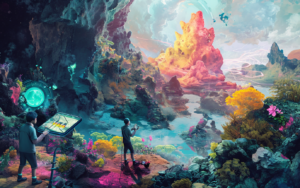 Content marketing is at a crossroads.
Content marketing is at a crossroads.
AI’s ability to generate human-grade content poses a significant challenge to marketers and creatives, but it also opens doors to unparalleled opportunities.
I could wax philosophic with more generic ChatGPT-like fluff and say things like, “To not just survive but thrive in this new era, marketers must embrace the change.”
And that’s true.
But I prefer practical tools and tactics, which is why I’ll be focusing a good deal of energy on the “how to” of AI workflows, using tools like ChatGPT, Custom GPTs, LangChain, Midjourney, Runway ML, Pika, and more.
If you haven’t already, subscribe to my newsletter to stay tuned.
And if you would like support with your own content marketing efforts, email me at nathan@nathantwarne.com.


